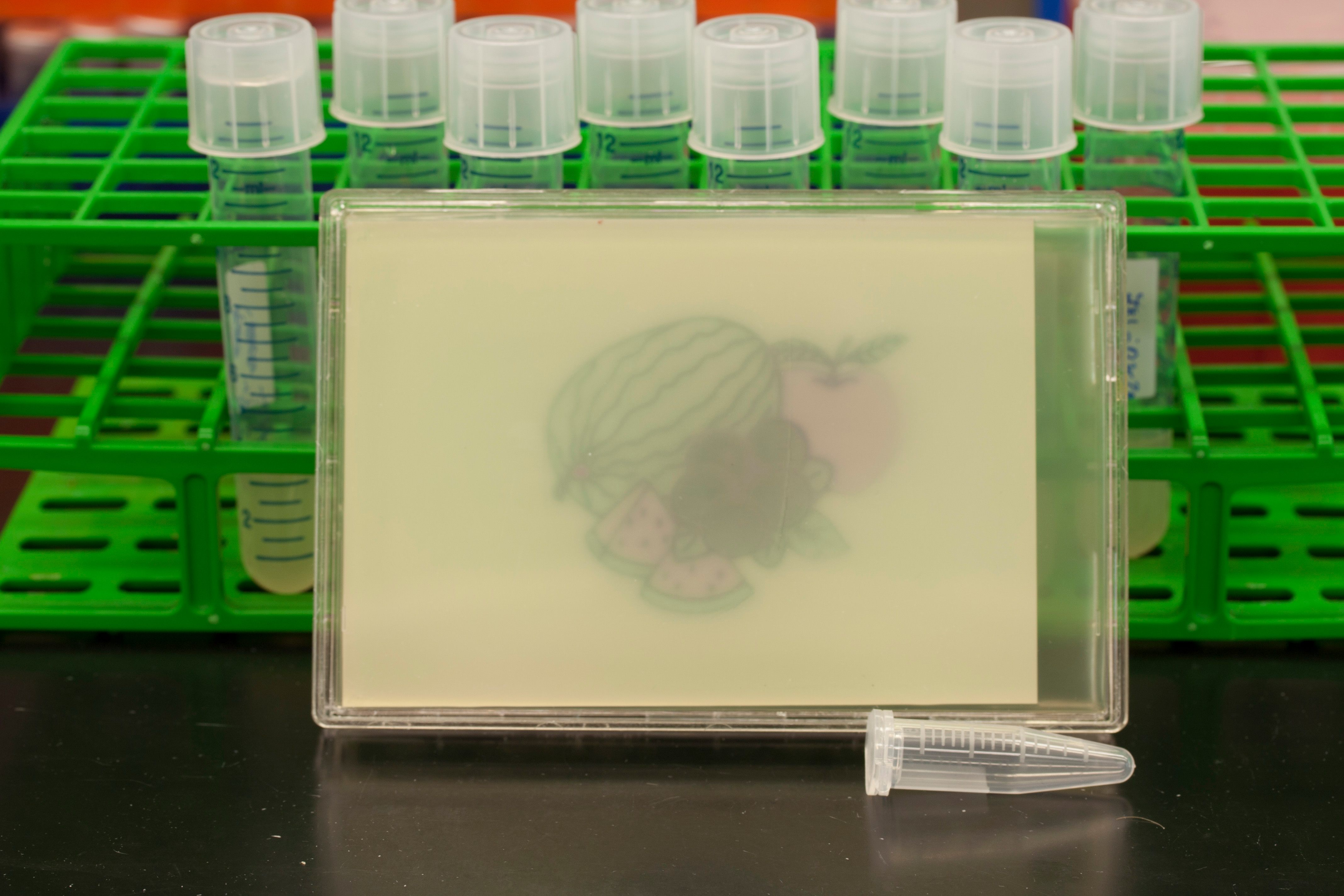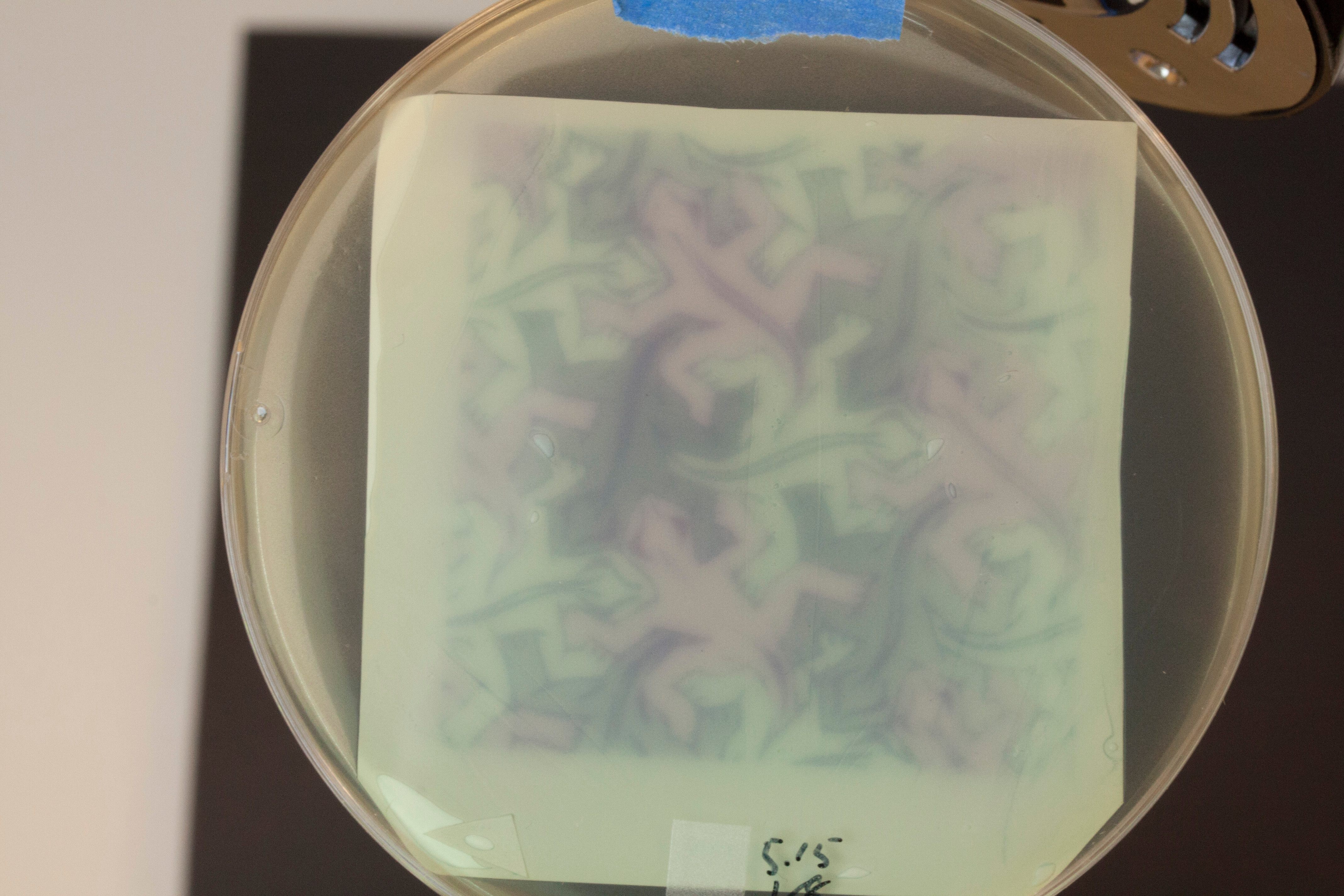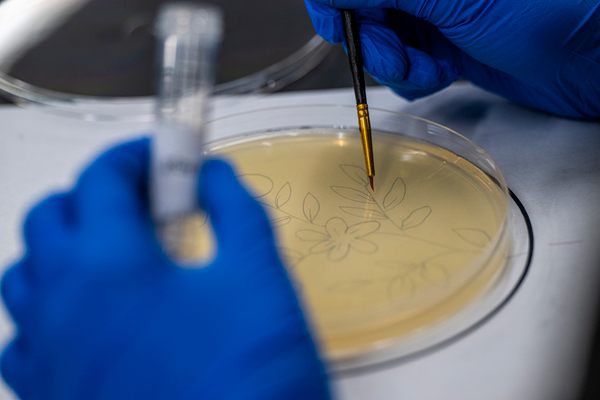These Images Were Made With E. Coli Bacteria
They take 18 hours to develop (grow).

Photographic film relies on light-sensitive grains of silver to capture images. Biological engineers at the Massachusetts Institute of Technology have created a new sort of photography, but it’s not digital and it doesn’t involve silver. Instead, it uses light-sensitive bacteria to generate images.
With modifications to just 18 genes, the researchers bred E. coli bacteria to detect and respond to red, green, and blue light. They start making these images by placing the bacteria on an agar plate (used to grow microorganisms) in a pattern. Then they shine light onto the plate. Depending on how they have been genetically modified, the microbes produce enzymes in one of the three colors, which then react with the agar to permanently print the image on the plate. The images may take a while—18 hours—to form, but the bacteria can create some fairly high-definition images of complex things, such as Nintendo’s Mario, a pile of fruit, or an M.C. Escher tessellation.

This isn’t the first time bacteria have been used as a photographic medium. Chris Voigt, the head of the MIT team, engineered E. coli to produce black-and-white images in 2005, with just four gene modifications. Voigt is calling the new modified microbes “disco bacteria.”
Making colored bacterial film sounds like a fun project, but it’s also a demonstration for some important future applications. Using light to turn on or off genes in bacteria could start or stop the creation of biological molecules or tissues. The process could even be used to create a communication system between organisms and electronics. Bacterial art is cool, but the potential of light-sensitive E. coli is even cooler.


































Follow us on Twitter to get the latest on the world's hidden wonders.
Like us on Facebook to get the latest on the world's hidden wonders.
Follow us on Twitter Like us on Facebook